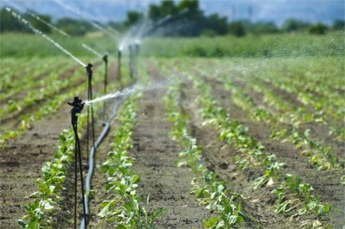Agriculture in Budget 2015-16
According to the new CSO estimates based on 2011-12, agriculture and allied sector contribution to the overall GDP has increased from 14 to 18%. The focus of the new government now is to increase the yield/productivity in order to increase the output. Keeping in mind the demands of the food grains, maintaining the buffer stock, government made significant changes in the recent past as well as in the present budget.
The RKVY (Rashtriya Krishi Vikas Yojana) funding is now routed into 3 components, viz. production growth, infrastructure and assets, sub-schemes and flexi-fund. The National Food Security Mission (NFSM) will be implemented with new targets of 25 MT of food grains (10 MT rice, 8 MT wheat, 4MT pulses, and 3MT coarse cereals) to be achieved by the end of 12th FYP. However these schemes do not get any allocation in the new budget.
The Mission for Integrated Development of Horticulture (MIDH) attempted to bring all the existing horticulture schemes under the single umbrella. The renewed focus areas include productivity improvement, use of micro-irrigation, quality planting material, protected cultivation, integrated pest management, nutrient management and marketing of the products.
The Pradhan Mantri krishi Sinchai Yojana, Neeranchal Yojana, National Adaptation Fund for climate change and a soil health card scheme are some of the schemes which got renewed attention.
The allocation in the budget 2015
A unified market for agriculture produce aimed at achieving twin objective of improving the farm income and moderating the prices of produce is proposed. Since agriculture being a state subject its implementation rests on the will of the state government. The past experience shows an unsatisfactory record of state government to amend the laws on APMC’s.
Further the budget allocated funds for two new irrigation programme called Pradhan Mantri gram sinchai yojana for irrigating all fields aimed at ‘more crops per drop’ and Pradhan Mantri krishi sinchai yojana to promote the watershed development. Also funds are allocated to Paramparagat Krishi Vikas Yojana (organic farming) to improve the productivity and production. The budget proposed to unify all the existing agricultural schemes under the Krishiyonnati yojana (agriculture development plan). Besides, the budget proposes to increase the corpus of agriculture credit to 8.5 lakh crore for 2015-16. However to focus on small and marginal farmers a separate fund of 25000 crore is allocated. Tax exemptions to cold storages and cold chains would prevent the food wastage and better the post harvest management.
The challenges to the sector remain with the variability in monsoon, food inflation and the increasing impact of climate change on the production. The food inflation do not seem to surge again in the coming months as the oil prices would not go up to the original levels because of weak global demand and increased supply. However global commodity prices are expected to remain weak in 2015 because of weakened demands.
Investment in research, education, extension services, cold storages, soil-test laboratories, warehousing, is needed along with rationalizing subsidies, targeting the beneficiary remain some of the challenges which needs to overcome in order to improve the yield/productivity of the farms in India.


